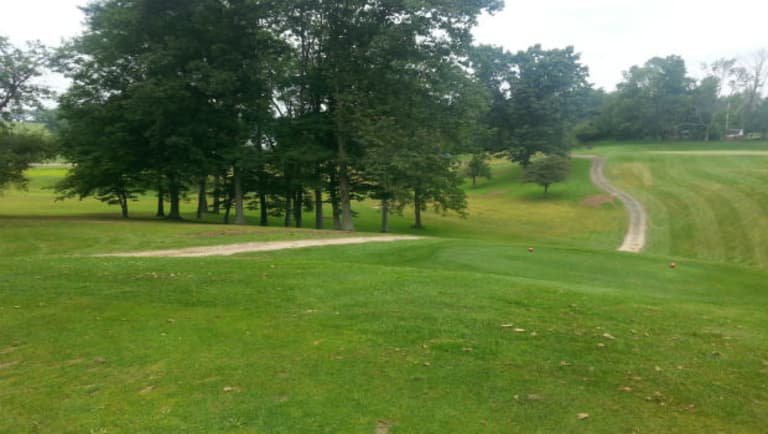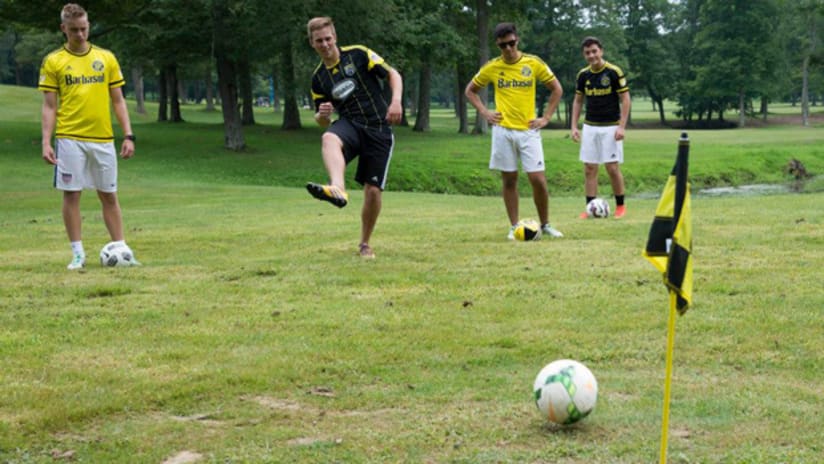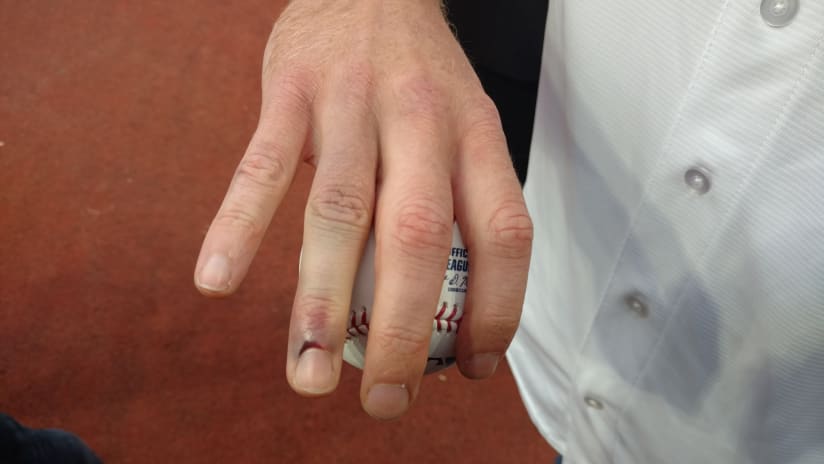Table of Contents
FootGolf Explained
Meet the Players
World Cup Veterans & Albatrosses
Mulligans
FootGolf Champions
When Columbus Crew SC Director of Communications Tim Miller suggested I attend the inaugural Crew SC Foundation FootGolf Classic presented by OhioHealth, two thoughts crossed my mind:
- This could be something fun to write about.
- I will probably have plenty of time to write while bedridden with multiple injuries.
Not that footgolf is inherently dangerous. Well, unless you are thrown from a cart being driven by a maniac. It’s just that I had visions of simultaneously tearing the ACL in my plant leg while rupturing a disc in my back because I am a 40-year-old sit-and-type specialist whose athletic achievements are so far in the past that Bruce Springsteen could write a sequel about them.
The good news is that not only did I escape injury over the course of 18 holes, but I also had a blast.
As a kid, I used to play my own version of foot golf, where I’d be at the park and try to hit a specific faraway tree, picnic table, or garbage can in as few kicks as possible. But now it’s a real sport played on real courses. The first footgolf tournament was held in the Netherlands in that most Massive year of 2008, and the sport has been spreading since then. One such course in Central Ohio is located at the Trout Club in Newark, which was the site of the 2015 Crew SC Foundation FootGolf Classic presented by OhioHealth.
Footgolf is nearly identical to regular golf. Players kick a size 5 soccer ball toward a 21-inch hole, with the goal being to get the ball into the hole in the fewest kicks possible. Since soccer balls don’t travel as far as golf balls, foot golf holes tend to be shorter—averaging 150 yards or so—meaning they can run perpendicular to traditional golf holes. An 18-hole footgolf course can snake its way through nine holes of regular golf.
The main difference between footgolf and regular golf is that if you duff a shot and wish to make your displeasure known by throwing a tantrum and chucking your club into the lake, it’s going to require a bone saw and a tourniquet.

My teammates for the tournament were Crew SC Communications Manager Ryan Schwepfinger, MLSSoccer.com Crew SC beat writer Andrew King, and the editor of Capital Style Magazine, Jenny Rogers. The tournament was played in scramble format, using the best ball hit by the team for each shot. This means that if you hit a bad shot, it only mattered if your teammates all hit worse shots than you did, in which case it was obviously all their fault for being terrible and not as good as you. That removes a lot of pressure from each individual and maximizes the fun quotient for everyone.
We started the tournament on Hole 12, which was anything but a normal hole. We were perched atop a huge hill, with the hole resting behind a wall of trees. It may have appeared intimidating, but with gravity working for us instead of against us, we all hit long tee shots and gained some valuable confidence as we parred our first hole.
Over the course of 18 holes, some playing traits emerged. Kinger was our long man. He would consistently hit the longest drives. Schwep became known for his erraticism. Whether he would hit a great shot or a terrible shot would be a mystery, even to him. Being an avid golfer, Schwep was also our scramble expert, who usually took the lead in analyzing the course and determining which ball we should use. Jenny and I are Ohio Bobcats, so we were just enjoying ourselves. We mostly made fun of ourselves for how sore we were getting playing footgolf. But the cool thing about our team was that everybody contributed. All four of us had best drives. We all had best approach shots. Each of us closed out holes by sinking putts.
In the end, we finished a respectable 13 under par. It was a true team effort. And much to my relief, we all finished the round with our ACLs intact.


